Getting Comfortable with Deadlines
One essential skill homeschoolers don’t always get to practice: Turning work in on time.
One essential skill homeschoolers don’t always get to practice: Turning work in on time.
The middle grades are an ideal time to get kids into the habit of working on a deadline. Open-ended projects open up possibilities in ways that due dates never could, so you don’t want to put everything on the calendar — but for high school and college, kids need the experience of turning in projects and papers on a deadline, and middle school is a developmentally appropriate time to work on this skill. That doesn’t mean it can’t be fun, though! Here are a few ways to make due dates a non-miserable part of your homeschool routine.
The final paper advent calendar
Revision may be more important than your first draft, but it can be tempting to put off writing a big paper until the night before it’s due, leaving no time for meaningful revision. One strategy we use is the revision countdown calendar — like those candy calendars that count down to to a holiday, this idea maps out a 14-day revision plan with a to-do envelope to open each day. You might include things like check spelling, revise introduction, and add new evidence, but I like to slip in a few fun things, like go for ice cream, too, so that the calendar feels exciting.
The due date evite
I love this strategy because it gives kids control of their final due date. Instead of assigning a deadline, let kids choose their own deadline, and — at least 10 days before — send you an evite to celebrate their final project. It may be helpful to give students a window (“you need to turn this in before the end of May”). The great thing about this is that evites will remind you that events are coming up, so you don’t have to nag or remind them that their deadline is coming.
Revision dice
Make your own set of dice to help you through the revision process: Roll to add a quote, make a reference to another book, add a counterargument, etc. When your student wraps a project, she rolls the dice the first three times, using her roll to improve her paper before she turns it in for the final time.
Make Deadline Day a party
If you’re just getting started with due dates, you might plan three or four “deadline days” each year, major due dates where students have to submit their work. (Plan a fun celebration, like a trip to the movies to correspond.) Kids won’t always succeed at hitting the mark, especially in the beginning, so don’t cancel the party — you don’t want them to associate projects with punishment — but make a point to talk about what went wrong and to make a follow-up deadline for kids to meet.
How To Turn Reading Into Learning
There’s no one right way to use all that reading you already do to help your kids absorb information, think critically, and start making connections, but here are six strategies to get you started.
This graphic is from the fall 2017 issue of HSL.
FAQ: How Do We Let a Long-Time Teacher Know We’re Looking for a New Class?
How do you break up with your kid’s teacher?
We’ve been taking piano with a perfectly nice but not amazing teacher for three years now. My son’s interested in taking lessons with one of his friend’s teachers — he’s a young, enthusiastic guy whom the kids adore. I know it’s okay to switch teachers, but do I need to let our long-time teacher know why we’re leaving? We don’t have any problems with her, but my son is really excited about the opportunity to study with another teacher.
Since you’ve been working with this teacher a while, I think it’s probably good manners to give her a little notice that you won’t be continuing lessons. You don’t have to do this, but it’s nice to let her know that there’s a change coming to her regular income stream in case she wants to advertise for new students or contact people on her waiting list. In some cases, you may actually be required to give her a certain amount of notice that you’ll be dropping the class or pay her for a full term of classes — if you signed a contract or payment agreement when you started your lessons, make sure you understand your obligations. You don’t have to go into details — shoot her an email to let her know that your son has enjoyed studying with her, but you won’t be continuing lessons after a specific date. I think a month’s notice is nice to give, but of course you have to do what works best for your family.
When you talk to her, it’s fine to disclose whatever you are comfortable with. (And it’s fine to email her or call her rather than telling her in person.) If you want to keep it simple, you can just say “We really appreciate everything you’ve done for Joe-Bob, but we’re making some changes to our schedule and will be ending our lessons with you after the 5th.” If you want to give more details, go ahead: “Joe-Bob has really enjoyed studying piano with you, but he’s decided he wants to try working with a different teacher. Our last class with you will be the one we have scheduled for the 5th.” If she asks why you’re switching, it’s fine to be vague —“It just seems like a better fit for us right now.” If you had a specific problem — lots of cancellations or a too-gruff teaching manner — it would be fine to let her know, but it sounds like you weren’t unhappy, just ready to move on. Usually in these situations, the best approach to take is the one you’d like someone to take in your position.
6 Ways to Reinvent Your Homeschool (Without Spending a Dime)
When you get that stuck-in-a-rut feeling — and we all do sometimes — these simple-to-pull-off changes can make your homeschool feel bright and shiny again.
When you get that stuck-in-a-rut feeling — and we all do sometimes — these simple-to-pull-off changes can make your homeschool feel bright and shiny again.
1. Don't wait for opportunities to come to you.
If you’re always test driving groups and classes without finding the perfect match, maybe this is the time to start your own group. If you wish a specific kind of curriculum existed but can never find it, consider making your own. It’s true that your efforts may not result in exactly what you want, but taking a more proactive approach to building your homeschool life will automatically boost your energy and enthusiasm.
2. Turn your schedule upside down.
One of the great things about being a homeschooler is that your days don’t have to follow the standard routine. If you’ve been following a rough 10-to-3 school day, shake things up by totally changing your schedule: Do science experiments on the weekend, take nature walks after dinner, or start the day doing a little math practice bed. Changing your routine can change your whole day.
3. Start a year-long project.
It might be a timeline or an illustrated taxonomy, a comparative mythology exploration or a local history quest. Whatever it is, your project should be big enough to keep you busy for several months but focused enough that you can wind down to a satisfying stopping point when you’re ready. Having a big project you share will naturally add a new structure to your days and shake up your routine in a gentle but definite way.
4. Move your furniture around.
It’s amazing what a difference it can make. Create a reading nook, or relocate the computer to the family room. Turn your hallway into a library, or add a little table in the kitchen. Switch your dining room and living room, or turn a closet into a cozy crafting desk. Changing your home’s internal set-up, even in fairly minor ways, can inspire you to try all kinds of new things.
5. Map your neighborhood.
This is one of those endeavors that can pay off richly if you make the most of it. Start by mapping your street— depending on your interests, you may identify trees and plants, or focus on streets and houses. Go slow — add one or two things each day, gradually expanding the circumference of your map. You’ll make surprising discoveries about an area you might think you know well, get more familiar with geography and compass directions, and have a cool record of the place you call home.
6. Start planning a big trip.
Planning a trip delivers almost the same benefits as actually going, and mapping your route through Germany or planning day trips in Costa Rica can make everyone excited to explore new topics and places throughout the year.
This was originally published in the summer 2018 issue of HSL. Subscribe here.
You Need a Homeschool Routine — and It's Not Hard to Build One
“We loved the idea of living without a schedule, but we quickly discovered that we were miserable living without a routine.”
“We loved the idea of living without a schedule, but we quickly discovered that we were miserable living without a routine.”
It’s part of the magic of homeschooling: Your schedule is totally your own. No early morning obstacle course to make it to the bus stop, no after-school homework sessions fueled by healthy snacks and cajoling, no trying to tuck everyone in bed in time for an optimal night’s sleep. You’re free to wake up at noon, do something different every day, and invent your schedule on the fly.
“We loved the idea of living without a schedule, but we quickly discovered that we were miserable living without a routine,” says Jordan Rankin, who started homeschooling her now-13-year-old twins when they were in fourth grade.
Rankin’s family started out strong, but within a few weeks, they were grumpy, tired, and disoriented. Not having a daily to-do list had felt liberating, but living without a routine proved disorienting. That’s no surprise, says Barbara H. Fiese, a psychologist at Syracuse University who studies family routines and rituals. According to Fiese, reliable routines can have a positive impact on the whole family: Kids with regular routines sleep better, get sick less often, do better in school, and generally exhibit better behavior than children who don’t have a daily routine. This repetition also builds stronger family ties and improves family communication.
A routine is not the same thing as a schedule. You can have a routine and still eschew daily deadlines. The key is to have a few moments that anchor your day — kids know to expect them, and they know what to expect when these moments roll around. However wild, spontaneous, and unplanned the rest of your day may be, routine anchors give days a sense of meaning and continuity. Routines can be as simple as family dinners around the table, morning readalouds on the couch, or walking the dog together before bedtime — they key is to pick moments that fall into a reliable rhythm for your day.
Start slow, and keep it going.
The biggest challenge people run into with starting a homeschool routine is trying to do too much. You’re most likely to succeed if you let your routine develop organically, and one of the most effective ways to do that is to add one piece at a time, giving your life plenty of time to adjust around that piece before trying to add something else. Say you love the idea of family dinner. Get your family dinner up and running, and keep it running for three or four weeks before adding another element to your routine, and the dinner routine is more likely to stick.
Think rhythm, not schedule.
A schedule implies that you’re on the clock, but a rhythm is all about patterns: After breakfast, we light a candle and read a book. After we water the garden, we clean up the front room. On Tuesdays, we go to the park. On Saturday nights, we make pizza. In December, we take the month off. Start by thinking about the year: What are the big annual events that shape your annual schedule? Then look at the month, the week, and finally the daily happenings of your household. A combination of all those elements yields a meaningful family routine.
Acknowledge your natural rhythm.
Rhythms work best when they’re naturally occurring — so if your kids rarely make it down to breakfast before 11 a.m., a wake-up-and-watch-the-sunrise routine might be doomed to fail. Why not watch the sunset together instead? It’s likely that your family has rhythms already — think back to the last few really good days you had together, and look at what the patterns of those days were like. You’ll probably find a clue to what makes a happy routine for your family.
Don’t be afraid to shake things up.
A routine gives your days anchors and expectations — but it also gives you something to break when you need a little dose of adventure. Occasionally shaking up your regular rhythms can be a lot of fun — just as knowing that you have them to go back to offers everyone a sense of security and connection.
—Sabrina Diaz
This was originally published in the summer 2019 issue of HSL.
My Practically Free Guide to Getting Started Homeschooling Elementary School
This is my go-to recommendation for new homeschoolers — it's designed to help you find your rhythm, build comfort with leading your students’ learning, and keep the learning going as you find your way. It’s basically a six-month, low-cost-investment guide to starting homeschooling.
Every summer, I get email from people who are trying to find the “perfect curriculum” for their brand-new homeschools, but the truth is, you probably won’t know what a perfect curriculum actually looks like for your family until you get through a few months of homeschooling. Homeschooling is partly about curriculum, but it’s also about understanding how your kids learn, what your family’s daily rhythm feels like, and what you’re actually willing to do every week to get ready for your family’s learning life.
That’s why I always recommend that new homeschoolers wait six months before making any major curriculum purchase. That’s really how long it takes most people to settle into homeschooling enough to know what you really need in a curriculum — which may turn out to be different from what you think you want when you first get started. It also lets you test-drive being a homeschool parent — which often involves different kinds of effort that new homeschoolers might expect. This sounds intimidating, but for elementary school, it’s SO EASY. This is my go-to recommendation for new homeschoolers — it's designed to help you find your rhythm, build comfort with leading your students’ learning, and keep the learning going as you find your way. It’s basically a six-month, almost-free guide to starting homeschooling. (As with all homeschool projects, you’ll have to spend money or time to get quality curriculum — this is low-cost, so it asks for a not-insignificant parent-time investment. I don’t think there’s any curriculum that’s almost free, hands-off, and a great educational choice, but two out of three isn’t bad!)
What you need:
A readaloud (You can choose any chapter book that you’re excited about, but some of my favorite starter-readaloud recommendations are: The Adventures of Nanny Piggins, The Pepins and Their Problems, The Vanderbeekers of 141st Street, or The Adventures of Pippi Longstocking, all of which are sometimes laugh-out-loud funny.)
A non-fiction book for history (There are lots of good ones, but The People Shall Continue makes a really good spine for Native American studies, A Child’s Introduction to African American History is a great take on U.S. History, or explore life in medieval times with Good Masters! Sweet Ladies! Voices from a Medieval Village. Choose one book as your focus.)
I don’t recommend buying math for the first months of your homeschool; instead, take this opportunity to test out different math options by using sample lessons. Math can be one of the trickiest curriculum buys because kids learn math in such different ways, so give your student a chance to play with several different curricula these first months. It will become clear which are better and worse fits. It will also give you an idea of what level to start with! If you spend a week on each sample lesson, this should get you through at least 10+ weeks. I’d try:
Beast Academy (this link takes you to the books, but check out the online samples, too — look for the downloads in the right sidebar of the page for the book you’re interested in)
Singapore Dimensions (click on the grade level to see the samples for that book)
Math Mammoth (the downloads are in the right sidebar)
Teaching Textbooks (scroll all the way to the bottom for the sample lessons)
Organizing your day:
Most days, start with nature journaling. Buy a notebook, and check outside to record the date, weather conditions, and one nature observation. Do an activity in The Nature Connection workbook a couple of times a week — many of them can be done spur of the moment, but a few require a little advance planning. Aim to check out one book a week from the library about a nature topic you’ve touched on, and read it together. This is pretty low-key science, so you will want to add a little more information-based science after the first semester, but it’s a good way to get into the habit of “doing science” together.
Move on to reading: Alternate history reading and literature readings so that you start with a different subject each day, and be OK with sometimes only getting through the first one.
For literature, choose five words from what you’re reading every week or two to be your “spelling words” for the week, and practice writing and defining them. Copy them every day or two to practice spelling, and see how many different ways you can use them in a sentence. Encourage your student to summarize each chapter: What happened? Your goal is to steer them in the direction of a clear, two- or three-sentence summary, but this can take years to get to, so be prepared to be patient! It’s fine to do this out loud instead of in writing. Ask your child to draw a scene, a character, or a setting from the story once a week. Also once a week, encourage her to come up with one question that the author hasn’t answered. (This is another work-in-progress skill — I did a talk at the SEA conference in June about a resource called The Good Thinker’s Toolkit that makes this a little easier, but honestly, a lot of it is a patience.)
For history, look for ways to apply what you are learning. Draw a map together. Make historical figure trading cards: Draw a historical personage on the front, and write their name, relevant dates, and a couple of facts on the back. (You can accumulate a giant deck of these by the end of the year!) Build or make something mentioned in your reading. Research something that interests you, and learn more about it. Find a video about something related to your reading and watch it together. Look for museum exhibitions (lots of them are online now!) related to what you are studying. Find music or art related to what you’re studying, and make your own art or music inspired by what you learn.
Set up in another location to do math. (If you read on the couch, move to the table; if you’re at the table, move to a desk. Changing locations helps with this transition.) Aim to do about 20 minutes of math three or four days a week. My daughter liked having a special “math pencil” to use when she did math. Pull out manipulatives — if you have an abacus, blocks, pennies, tape measures, number rods, or number blocks, etc., you can use those to work through problems visually together.
Finish your day with art. Do this once a week, though if you love it, you can definitely do it more. Drawing with Children has great, low-prep methods for “teaching” art — you’ll get the best results if you draw with your child!
This schedule is simple — you don’t need to color-code anything or plan out weeks in advance — but that’s what makes it a great starting point for new homeschoolers. You’ll have plenty of space to pay attention to what’s working in your homeschool and for your kids, but you’ll have enough to do to fill up your days and develop a structure for your homeschool. Once you’ve done this for a while, you’ll probably be ready to move on to a more structured curriculum — but you’ll be able to do that with a clear understanding of what works well for your family.
(As students get into middle school and beyond, you could certainly adapt this method, but a more structured learning plan might make more sense for your student.)
(We’re Amazon affiliates, so if you purchase something through an Amazon link, we may receive a small percentage of the sale. Obviously this doesn’t influence what we recommend, and we link to places other than Amazon.)
How to Learn at Home Without Losing Your Mind: Tips for COVID Homeschoolers
If you’re homeschooling to get through the world health crisis, you totally count as a homeschooler — but what you need may not be traditional homeschool recommendations.
If you’re homeschooling to get through the world health crisis, you totally count as a homeschooler — but what you need may not be traditional homeschool recommendations.
If you are starting a new year at home — for a few weeks or indefinitely — as part of the COVID-19 self-quarantine, you may feel a little at a loss. An important thing to remember is that this is probably not a permanent state of affairs — fingers crossed, we’ll get through the quarantine period and back to our normal lives in the not-too-distant future. If this is your situation, a lot of new homeschooler advice — about deschooling and figuring out your student’s learning style — may not be relevant. You’re a temporary homeschooler, and you just need a little help getting through the next few weeks or months. Here’s my best advice:
1. Get everybody up and dressed on weekday mornings, even if you don’t have anywhere to be. You have worked hard to establish a routine that makes sense for your family, and you don’t want to just drop it. (If you don’t love your routine and want to figure out one that works better for you, this is obviously a great time do that.)
2. Go ahead and set electronics limits. If you knew you wanted to homeschool long-term, not limiting electronics can be a handy way to help kids learn to balance their own electronics use — but this is a long-term strategy. In your short-term situation, it’s fine to say “no electronics until 4 p.m.”
3. Pay attention to major output requirements. Online lessons can be hard to adjust to, and your child — and your child’s teachers! — may be new to them. The most important thing is to make sure students know what output they are responsible for producing and when it’s due. Make a calendar of due dates for each subject, and post it in a prominent place.
4. Set up a learning space. It doesn’t have to be a whole room or anything, but a comfy chair, clear work surface, the aforementioned calendar, and other school materials can make a corner feel like a learning place. For students who are used to going to school, sitting down at a specific place to work and getting up from it when work is over feels familiar and comfortable.
5. If you have a learning plan from your school, stick with it. It’s tempting with all the free resources right now to download everything, but too much stuff is as bad as not enough. If you must, choose one extra thing to study, but resist the urge to overload your student. Adjusting to a new rhythm, dealing with the disruption of their regular life, and worrying about the situation is already a lot of new stuff to deal with.
6. Make sure you know what counts as credit as your school. If you know you want to go back to traditional school when you can, talk to a human being at your child’s specific school to find out what homeschool credits they’ll accept. For elementary and middle school students, this won’t matter as much — though you should check anyway to be sure! — but public high schools may not accept homeschool credits, even accredited ones, or count them toward the credits required for graduation. If this is the case, you may be better served working with your school’s distance-learning option, even if it’s not perfect, and providing lots of hands-on support.
7. If you don’t have a learning plan from your school, I recommend the unit study: Pick a subject that interests your child, and take a deep dive into it. (I know this is harder with so many libraries closed, too, but you can still order books from Amazon, check out from your library’s digital collection, and find lots of info and project ideas online.) This may not seem like a lot, but if you are starting together from scratch, unit studies are a great place to start.
8. Include lots of downtime. It’s tempting to schedule every minute, but remember: Kids at school spend plenty of time lining up, changing classes, getting settled, and packing up. You don’t have to do any of those things at home — so a homeschool day can be considerably shorter than a regular school day. Don’t let this make you feel like you’re not doing enough!
9. Be gentle with yourself and your child. This is all new for you. It may take you time to figure out how to do it well. That’s okay. (I feel like it took me a couple of years to get a handle on how our homeschool life worked best, so if you can’t do it in a couple of weeks, that definitely doesn’t mean you don’t know what you’re doing! It just means you’re still figuring it out.)
10. It is fine to set up designated snack times and stick to them. One thing homeschoolers discover pretty fast is that kids can eat all day long. Establishing snack and meal times can minimize this somewhat, especially if grocery shopping is more complicated right now.
11. Make time to get out and exercise. It can seem weird to schedule this, but making it part of your routine can improve your whole day.
12. Keep bedtime (fairly) consistent. Again, if you’re planning to go back to school, you’ll be glad you stayed in the bedtime habit.
13. Make time for yourself. Whether it’s 30 minutes of quiet time after lunch or an 8 p.m. everybody-in-your-own-room time, you need time when you can decompress and relax, too. (Don’t spend all the time reading virus updates, though, OK?)
14. Try not be offended by long-time homeschoolers who may seem to minimize what you’re doing. Homeschoolers get a lot of flack from people who worry about whether our kids are socialized and what we’re teaching, and we can get a little sensitive and defensive because of this. Don’t take it personally! If your goal isn’t long-term homeschooling, long-time homeschoolers may not be the best people to ask for advice simply because homeschooling and traditional school are really different. What works for homeschoolers may not work for you right now. (Homeschoolers often go through the reverse of this situation when we start homeschooling, trying to copy what schools do and realizing that just doesn’t work at all.) But do keep in mind that, similarly, your understanding of homeschooling is a very specific kind of understanding, and don’t use it to marginalize or criticize what homeschoolers do either. Let’s honor each other’s situations and choices.
How Do You Get Ready for a New School Year?
We rounded up our readers' best tips to prepare for back-to-school.
We rounded up our readers' best tips to prepare for back-to-school.
Accept that all my plans are subject to change at any point!
—Claire*
Since we started homeschooling, I’ve asked my kids to answer the same five questions every year on the first day of school: What’s your favorite book, where would you most like to travel, what do you like to do, what do you like to learn, and what’s your favorite song. I’ve been keeping their responses and plan to bind them to give as a graduation gift.
—Jordan*
Last year, we set up “work stations” for both kids with desks, shelves, and a file cabinet even though our homeschool is very relaxed. Having a dedicated workspace has made my sons better at following through on some of their big ideas that have previously started with a bang and petered out unfinished over the semester.
—Rachel*
Write your own rubrics. This is less glamorous and exciting than not-back-to-school parties, but figuring out what you want to accomplish with each child and how you’ll measure your success in accomplishing those ends will pay off for your home- school all year long.
—Juliet*
Frose! Freeze your fave rose overnight in an ice cube tray, then blend with 1/2 cup chopped strawberries, 4 ounces of Licor 43 (or even golden syrup in a pinch), and a shot of lemon juice until it’s all slushy goodness. It makes everything better.
—Cara*
I start seeding our reading basket with books related to things we’ll be studying in the fall at the beginning of the summer — when we start “back to school,” the kids have an immediate connection to our lessons.
—Mary Beth*
Move everything in the school room around. rearranging all the furniture keeps us from getting into a rut and inspires us to try new things — plus, it helps keep at least some of the clutter at bay.
—Alison*
I try to get play dates and park days on the calendar way in advance — my very social kids look forward to activities, and this way, they don’t get lost in the busy-ness of our school year.
—Valerie*
I write official break days into the calendar every few weeks. We always seem to fall behind — I think I might be an over-ambitious planner! — and we can get exhausted playing catch-up. Having regular breaks in place helps push us to recalibrate as needed.
—Jenny*
I like to start each new year by making a list of everything that we’ve accomplished and enjoyed so far. It helps get me in a positive frame of mind and gives me a little confidence boost as I’m figuring out our next moves.
—Courtney*
The kids and I put together a soundtrack for the year, a combination of songs we love and songs that highlight things we're excited about doing in the coming year. We end up playing it all year long.
—Joy*
I choose a couple of my favorite art pieces from the previous year and get them professionally framed. (We move the previous year’s art to our hallway gallery or the kids’ rooms.) It’s a fun way to freshen up our school room.
—Emily*
We make a “snack schedule” so that we can stock the fridge and pantry with get-your-own snacks.
—Cameron*
*last names removed for online publication. This was originally published in the summer 2018 issue of HSL.
Shift Happens: Making the Most of Big Changes in Your Homeschool Life
Navigating big changes in your homeschool life can seem like a scary prospect, but you’ve got all the tools you need to make your next big transition feel as exciting as it is stressful. Here’s what you need to know.
Navigating big changes in your homeschool life can seem like a scary prospect, but you’ve got all the tools you need to make your next big transition feel as exciting as it is stressful. Here’s what you need to know.
Like it or not, change is an inevitable part of life — and for most of us, it’s not always a welcome part. For every change that feels like a great new adventure, there’s a change that feels like an earthquake ripping through your peaceful everyday existence. Change is scary, but it’s also rich in possibility. “Making a big change can increase your sense of life's possibilities, and as you rise to new challenges, this can also increase your resilience,” says Rick Hanson, Ph.D., a psychologist and the author of Resilient: How to Grow an Unshakable Core of Calm, Strength, and Happiness. Every life transition — from your decision to homeschool to figuring out what to do when your homeschool days end — is an opportunity to open up new possibilities.
“Living through a big change teaches you about your own capabilities,” Rachna D. Jain, Psy.D., says. “You may learn that you're a lot stronger, smarter and more motivated than you thought.” That might not make facing a major transition less scary, but it does mean that if you tackle it the right way, change can end up feeling like the best thing that could have happened. In fact, says Jain, people who embrace a big change are happier five years down the road than people who stick to the status quo. The key is knowing how to navigate change.
"People think of change as something dangerous," says Auriela McCarthy, author of The Power of the Possible. "But it helps to remember all the ways your life has been altered in the past and realize that not only did you not keel over and die, things often turned out for the better." These major life transitions can shake up your homeschool life, but with the right tools and strategies, you can make these changes for the better, too.
“It’s tempting to fill up every moment with readalouds and park days, field trips and nature walks, but leave lots of room in your schedule to find your homeschool’s natural rhythm.”
SURVIVING THE FIRST WEEK OF HOMESCHOOLING
You’ve made the big decision, filled out all the paperwork, and now you’re officially a homeschool family. So — gulp! — what do you do now? Like any first day on the job, you’re equal parts excited and overwhelmed, ready to find your new routine and worried that you might not be up to the task ahead of you.
WHY IT’S SCARY: Taking responsibility for your child’s education is a big deal, and how ever much you’ve researched and prepared, you’re diving into the unknown when you start homeschooling. “The unknown freaks people out,” says Deborah Brown-Volkman, author of How to Feel Great at Work Every Day, Coach Yourself to a New Career. “You worry: Can I do this job? Will I be successful? Will this hurt my relationship with my child?”
HOW TO COPE
Build a support system. Do you have a mentor, group, or other resource you can count on to help guide you through these first few months? Even just having someone to say “I hear you” or “That sounds totally normal” can make the transition to homeschooling feel less stressful.
Think priorities, not plans. Like any new project, homeschooling comes with a steep learning curve. Your perfectly curated curriculum and meticulous schedules may not, after all, be the right fit for your homeschool, so don’t spend too much time or money on either for the first few months. Instead, turn your attention to the big picture goals for your homeschool, and let these goals guide your early decision making. For instance, if your goal is getting your child excited about learning, a traditional curriculum might not be the best place to start.
Be flexible. The less money you spend in these early days, the easier it will be to make big shifts — and you’re probably going to make significant changes as you settle into a routine and familiarize yourself with how your student learns best.
Leave lots of gaps. It’s tempting to fill up every moment with readalouds and park days, field trips and nature walks, but leave lots of room in your schedule to find your homeschool’s natural rhythm. These gaps also give kids time to explore their own interests, develop hobbies, and — yes! — be bored.
Know what a positive result looks like for you. Set a short-term outcome goal that you can keep your eye on — it might be something specific, like working toward passing an end-of-term exam, or something more qualitative, like creating a happy home learning environment. Having a goal will help you track your progress, which can boost your confidence as you begin homeschooling.
ON THE PLUS SIDE: Copenhagen’s Happiness Research Institute found that a sense of purpose in your work is the number-one indicator for job satisfaction — and what’s more purpose-inspiring than your child’s education? Making the switch to homeschooling may be a big change, but it’s a change that may ultimately increase your overall life satisfaction.
“Try a little of everything in small portions. It’s the life equivalent of ‘Don’t fill up on bread.’”
MAKING A MOVE
Moving across town or across the country is a big adventure, but it can be a stressful one, too. If you’re homeschooling, the transition can be trickier since you don’t have the Insta-Community school offers as safety net — you’re on your own, and that can feel really intimidating.
WHY IT’S SCARY: "We don't realize just how much of our identity is tied up in where we live," says Cathy Goodwin, Ph.D., and author of Making the Big Move. You’re not just adjusting to a new house and finding a new favorite park, you’ve got to rebuild your entire community, from your doctor’s office to your supermarket. And for homeschoolers, who have usually worked pretty hard to develop a community, the prospect of starting over from scratch can be especially intimidating. “It took us three years to build our homeschool community, and as soon as we felt settled, my husband’s job transferred him across the country,” says Jenna*, who homeschools her 2e son Jonas in Wisconsin. “We had worked so hard, and it isn’t an exaggeration to say that the prospect of moving felt like our world was falling apart.”
HOW TO COPE
Give everyone a period of adjustment. Giving everyone a little prep time can make a big move seem less scary. Once she adjusted to the idea of a move, Jenna hopped on Facebook, reaching out to everyone she knew to find a homeschool community in her new town. To her surprise, “people were incredibly kind and generous about sharing resources,” she says. She and Jonas also researched comic book stores and robotics teams (two things Jonas was especially upset to leave), and found that their new community had great options for both of these things. By the time they took their official house-hunting trip, the Holcombs were able to drop in on a potential robotics class, visit a co-op with a cool science program, and join a homeschool park day. “It started to feel exciting — not just scary,” Jenna says.
Stick to familiar routines. One of the most effective ways to make a new place feel like home is to bring the rhythms that feel like home with you. “Keeping up rituals like family meals or game night can build a sense of consistency that's reassuring,” says Katie Novick, a therapist in Brookline, Massachusetts. Sure, you may not be able to replicate your exact schedule, but keeping your morning routine the same and sticking to your Saturday family pizza-and-a-movie night can make a big difference in helping you feel grounded in a new place.
Don’t make big commitments fast. It’s tempting to plunge right into joining a new homeschool group and signing up for All The Classes to get into the swing of a new place, but you’ll be happier in the long run if you leave plenty of space for your new life to develop around you. “Try a little of everything in small portions,” recommends Novick. “It’s the life equivalent of ‘Don’t fill up on bread.’”
Keep an open mind — and keep trying. On the other hand, building a community takes work and time, so you’re going to have to put yourself out there and try things, knowing that some of them won’t be a good fit. This can be hard when you’re still recovering from the chaos of a move, so take breaks when you need to — but don’t stop. People who made forging new relationships and networks a priority were happier two years into their move than people who took a wait-and-see approach, found researchers in a small Danish study.
ON THE PLUS SIDE: Change leads to more change, says B.J. Fogg, Ph.D., a behavior scientist and founder of the Behavior Design Lab at Stanford University. "When you make a big adjustment, you also tend to switch up your environment, your schedule, and your social circle. That then ensures that you keep evolving and advancing.”
“Of course you want to make this transition as smooth as you can for your children, but don’t neglect yourself in the process. ”
GETTING THROUGH A DIVORCE
Even the best, most mature break-ups are hard to get through, and when you’re navigating the end of a marriage that includes other people — your kids — it can be especially hard. And if you’re homeschooling, navigating a new financial and family situation can be even more challenging. “Roughly half of all marriages end in divorce, and divorce doesn’t hurt children — it’s the way parents get divorced and the amount of conflict between them that hurts children,” says counselor and mediator David Kuroda.
WHY IT’S SCARY: Divorce means big changes — divesting all the parts of your shared life and building a new, independent life on your own. This often means big financial shifts, often including moving house and new budgets, and it always means big emotional shifts. Even though divorce is common enough in the 21st century, many people still feel that it means they’ve failed in some important project when their marriage doesn’t work.
HOW TO COPE
Get the help you need. Of course you want to make this transition as smooth as you can for your children, but don’t neglect yourself in the process. “Divorce can be an emotionally charged experience, even if you part on good terms, and parents need space to deal with the end of a relationship,” says Kuroda. If you ignore your own feelings, they’re likely to come out in ways that ultimately make a divorce harder for everyone.
Get on the same page. If one parent wants to homeschool but the other one has strong feelings about other education options, things can get complicated. “When we're married, we work hard to minimize our differences — we're more willing to negotiate and compromise on questions of family and child rearing,” says M. Gary Neuman, author of Helping Your Kids Cope with Divorce the Sandcastles Way. Ideally, kids will stick with the same academic routine they had pre-divorce, says Kuroda, so this isn’t a great time to make the transition back to school or to pull them out to start homeschooling. If homeschooling is a point of contention, it may help to bring in a mediator who can help you pin down objective metrics for your homeschool. Heidi Kessler’s partner insisted on annual testing to make sure their children didn’t slip off the grid, and while she initially resisted, the testing turned out to be a low-hassle way to keep her partner’s support. “We could have fought it out, but nobody would have won in that situation,” Heidi says. “In the end, we both wanted our kids to have a good educational experience, and we were able to find a way that made us both feel okay.”
Keep kids out of the middle. This can be tough if you and your ex are disagreeing about details, but it’s important that your kids don’t feel like they have to choose sides. A parenting plan can really help with this, spelling out how your kids will spend time, what your financial obligations to each other are (including college), and establishing a new family routine. It can be especially hard on kids if one parent doesn’t follow through on planned time together or commitments, so make your own follow-through a priority and try to minimize the impact of let-downs if your partner is the one missing commitments.
ON THE PLUS SIDE: Eighty percent of kids said that their parents’ divorce had been a good thing and that their own lives improved post-divorce in a 2004 study of adult children of divorced parents led by Constance Ahrons, psychologist and author of the book We’re Still Family: What Grown Children Have to Say About Their Parents’ Divorce.
“You do not have to have a long-range plan right now. What you need is a way to get through today.”
COPING WITH A HEALTH CRISIS
When Laura’s* husband was diagnosed with cancer just two weeks after her daughter was hospitalized for depression, she thought she would collapse. Laura was homeschooling three children, including her daughter, and her husband was the primary breadwinner. Suddenly, Laura found her time consumed by caretaking.
WHY IT’S SCARY: Coping with a health crisis can be incredibly hard. “We all live in some degree of terror of bad things happening to us," says Barbara M. Sourkes, associate professor of pediatrics at the Stanford University School of Medicine. “Families say over and over, ‘It’s such a lonely time and I don’t have the energy to educate my friends and family, yet they don’t have a clue.’ ”
HOW TO COPE
Give yourself time to grieve. “We can't move on until we honor what's gone,” says Joan Borysenko, Ph.D. and author of Saying Yes to Change. “You can't jump past the fact that you've lost your sense of invincibility.” If you try to bottle up all your feelings, they’ll be waiting for you down the road — when they may be much harder to deal with.
Be specific about what will help. People often want to help families going through a health crisis, but they don’t know what they can do — so tell them, recommends Sandy Clancy, PhD, co-chair of the Family Advisory Council. Make a list of specific things that would be helpful — dropping a child off at soccer practice or co-op, dinner after Wednesday chemo, someone to watch the kids so you can nap on Saturday afternoon — and hand it off to a few friends who can spread the word. “This feels weird and presumptuous, but people who care about you are glad to find a way to help.”
Take short-term fixes. You do not have to have a long-range plan right now, says Clancy. What you need is a way to get through today. This might mean putting homeschooling on hold — that might mean relaxing your homeschool, outsourcing more learning, taking a long break, or even sending your kids back to school. “If you go in knowing you’re looking at a short-term fix, you tend to be much more open to possibilities,” Clancy says.
Seek family services. Most hospitals can hook you with support groups, whether you’re dealing with a mental health crisis in your teen or a health diagnosis of your own, and these can be great resources to help you navigate this kind of crisis. “My friends cared, they wanted to understand, but they couldn’t really know what I was going through,” says Laura. “In the support group, every single person was going through the exact same thing.”
Give yourself grace. This should probably be a universal mantra for homeschool parents, but it’s especially important when you’re dealing with a heath crisis, says Clancy. You’re going to forget things, sometimes even important things, and you’re not going to do everything perfectly. Let yourself appreciate that you’re doing your best.
ON THE PLUS SIDE: “Going through tough times together can bring your family closer together,” says Clancy.
“Homeschooling is a one-of-a-kind experience, and it deserves a joyful send-off.”
GOING BACK TO SCHOOL
Marnie* thought that after six years of homeschooling her son Joey she was ready for anything, but she was shocked when the summer before 9th grade, Joey started talking about going back to public school. His neighborhood friends were all going, and he loved the idea of being part of the high school’s big, active theater group. “When we pulled him out of school in elementary, I guess I thought we’d homeschool until he went to college,” says Marnie. “But it turns out that’s not what Joey wanted.”
WHY IT’S SCARY: We’ve all heard the stories about homework overload and mean kids — not to mention active shooter drills — at school, and it’s hard to voluntarily pull our kids from the relative security of homeschool to face those challenges. It can also feel like a judgment on our homeschooling success: Have I prepared my student to survive in a “real” school? Does he want to go back to school because I’ve been a crummy homeschool parent?
HOW TO COPE
Do your research. Public schools are all over the place with how willing they are to accept homeschool work for credits, and it can vary not just by district but by individual school. Your best bet is to meet with the school’s guidance counselor to find out what — if any — credits they will transfer and how they’ll place your student in classes. “My daughter wanted to go back to high school to play soccer her senior year, but the school wouldn’t accept any of her homeschool credits — even though we’d taken many of those credits at an accredited hybrid school,” says Miriam*. “She would have had to start over with 9th grade, which made going back a non-starter.”
Practice school skills. Homeschoolers are often well equipped for the academics of traditional school, but they may need to practice school specific skills, like taking notes, opening lockers, taking timed tests, maintaining learning stamina for several hours at a time, or changing classes.
Plan some great memories. Homeschooling is a one-of-a-kind experience, and it deserves a joyful send-off. “Joey and I made a list of all the things we wouldn’t be able to do when he was back in school — afternoon movie marathons, spontaneous camping trips to the mountains, Tuesday mornings at the science museum — and we filled up our summer calendar with all those things,” says Marnie. “I thought it would be sad, but it was actually a really joyful summer of remembering all the good times we’d had homeschooling.”
Set up a support system. The first weeks of the school routine can be a challenge, and kids may need a lot of structure to support them. Set up a designated homework zone, create a morning and evening routine to facilitate early wake-ups, and make sure your weekends have plenty of downtown. “It was a huge transition, and there were some definite bumps in the beginning, but he absolutely made the right decision,” says Marnie.
“You can be proud of your child’s accomplishments, excited for her new adventure, and still mourn the loss of your homeschool days.”
REGROUPING AFTER GRADUATION
Homeschooling can be an all-consuming experience, and achieving its ultimate end — launching your child on her post-high school adventure — puts you right out of a job. “I’d been devoting all my energy and free time to homeschooling for eight years, and suddenly it was just done,” says Tamara*, whose daughter graduated from high school two years ago. “I was surprised by how lost I felt.”
WHY IT’S SCARY: The relationship you had with your child and your role as her parent are never going to be the same — everything is different now, says Natalie Caine, the founder of Empty Nest Support Services. If parenting has been a huge part of your life, this can be a tough transition.
HOW TO COPE
Accept your feelings. It’s OK to be sad! You can be proud of your child’s accomplishments, excited for her new adventure, and still mourn the loss of your homeschool days. Equally, it’s OK if you’re delighted with the prospect of your newfound free time — celebrating space for yourself doesn’t mean that you don’t love your child or you didn’t love homeschooling. And it’s OK to feel both ways, depending on the moment.
Follow your teen’s communication lead. Some kids thrive on daily texts and phone calls; others want a little more space to navigate their new terrain. “I was so used to being part of my daughter’s everyday life — I wasn’t ready for her to go two or three days without calling, but that was what she needed to adjust to campus life,” says Tamara. “It took some emotional recalibration, but we’re as close as ever even though we may not talk every single day.”
Make plans together … Especially if your child is moving out into a dorm or place of their own, put family time on your calendar — a family fall break road trip or Thanksgiving getaway will give all you something to look forward to.
And separately. With a big chunk of time opening up, a long-term goal will give you something to focus on and work toward, says Jeffrey Arnett, a developmental psychologist and the author of the book Getting to 30. This helps reorient your internal to-do list so that it’s focused on something for you, whether that’s running a marathon, taking college classes, or volunteering with a political campaign.
ON THE PLUS SIDE: A 2013 study at Clark University found that while 84 percent of parents missed their flown-the-nest kids, 90 percent of them were happy with the children’s growing independence and 60 percent were happy to find more time for their own lives one year later.
*last names removed for online publication
This was originally published in the summer 2019 issue of HSL.
How to Make Your Homeschool More Academically Rigorous
A more rigorous homeschool involves pushing further and deeper across the curriculum.
A more rigorous homeschool involves pushing further and deeper across the curriculum.
Jane Cleghan, who sent two homeschooled kids to the Ivy League, says that academic homeschool means pushing further and deeper across the curriculum.
Keep asking questions. Never stop with the first answer. “Ask What might that mean? and Why would that matter?, and keep asking,” Cleghan says. “If you stop with ‘the answer,’ you miss the opportunities for deeper understanding and cross-curricular connections.”
Emphasize your weaknesses as well as your strengths. A lot of homeschoolers tend to concentrate their academic efforts on the subjects and projects that come naturally — but it’s just as important to focus effort and attention on the areas where you don’t have natural abilities.
Look for output opportunities. An academic homeschool should give your students the chance to show their work. This doesn’t mean standardized tests — though those may fit into your post-homeschool plans — but papers, projects, presentations, and other products give your student an opportunity to research, analyze, and express information in a variety of ways.
Learn from other people. Cleghan says you can have a great academic homeschool with no outside instructors, but her students often benefited most from getting to know other teachers and other teach- ing styles—even if they didn’t particularly love the teachers or their styles. “Being able to learn in any environment you might find yourself in is essential for higher-level academics,” she explains.
3 Alternative Spines for High School World History
World history is fascinating — so shouldn’t your high school history book be interesting, too?
World history is fascinating — so why aren’t world history textbooks?
World history is fascinating — so why aren’t world history textbooks? If you’re aiming to ace the AP World History exam or cover a specific range of history, you may find a textbook helps you get where you need to go, but if your prospects are wide open, so are your book options. These not-your-standard spines will inspire your world history studies in brave new directions.
How We Got to Now By Steven Johnson
In significant ways—some profound and some problematic — human history is the history of invention and innovation. In this book, Johnson traces the impact of six different scientific break- throughs over time: glass, cold, sound, clean, time, and light. Glass, for instance, began a part of fancy Egyptian jewelry and evolved to modern fiber optics; the evolution and increasing precision of train schedules is a fascinating look at how sophisticated our methods of time measurement have become.
A History of the World in 100 Objects By Neil MacGregor
From the earliest surviving object made by human hands — a chopping tool from Africa’s Olduvai gorge — to a solar-powered lamp and charger, MacGregor explores the world through the objects used by ordinary people. It’s these very people whose stories often get left out of history books, though — as MacGregor demonstrates—their experiences are often the ones with lasting impact on history.
A History of the World in 12 Maps By Jerry Brotton
Cartography historian Jerry Brotton considers how maps have shaped our understanding of the world around us, from ancient Greece to Google Earth. Perhaps nothing reveals more clearly how we see t he world than our attempts to trace its limits, and maps — part science, part subjectivity — reflect the imperial, religious, and economic agendas that shaped history.
(We’re Amazon affiliates, so if you purchase something through an Amazon link, we may receive a small percentage of the sale. Obviously this doesn’t influence what we recommend, and we link to places other than Amazon.)
Tired of Being Tired? It Could Be Homeschool Burnout
Burnout doesn’t mean homeschooling isn’t working or that you’re a bad homeschool parent — but it does mean something needs to change.
Burnout doesn’t mean homeschooling isn’t working or that you’re a bad homeschool parent — but it does mean something needs to change.
One morning in mid-April, Lindsey* lay in bed, staring at her ceiling.
Her to-do list for the day was full: finish up a geography unit with her 9-year-old, work through a math quiz with her 11-year-old, and make sure her 14-year-old got to her theater troupe practice on time. And that was on top of the usual run of feeding people, cleaning the house, and managing all the rest of her homeschool life. She should get up. But she just lay there, staring at the lines on the ceiling.
“You think of high-powered career people getting burned out, not homeschool moms,” Lindsey says. “I knew something was wrong with me, but I never thought I was burned out.”
Burnout is a real mental health phenomenon, and it’s different from the “I’m-gonna-need-a-bigger-cup-of-coffee” exhaustion that can strike on a busy homeschool week.
“Burnout happens when you’ve been experiencing chronic stress for so long that your body and emotional system have begun to shut down, and you’re operating in survival mode. You numb out because you can’t think,” says Sara Denning, Ph.D, New York City-based psychologist.
If that sounds a lot like depression, it’s because it is — when researchers from the University of Franche-Comté looked at 5,000 teachers who described themselves as “burned out,” 90 percent of those teachers also met the diagnostic criteria for depression, including sleep changes, fatigue, and an inability to find enjoyment in previously enjoyed activities.
While stress makes you feel super-emotional — think mood swings and eating your feelings — true burnout makes you feel — well, nothing. In fact, it can be hard to distinguish between depression and burnout because there’s so much overlap in the symptoms, so if you’re not sure what’s going on with your slump, David Hellerstein, M.D., professor of clinical psychiatry at Columbia University, recommends taking a week’s vacation from homeschooling. At the end of the week, are you excited and ready to dive back in? You’re probably dealing with an overcrowded schedule, but you’re not really burned out. On the other hand, if you’re back to feeling burned out a couple of hours or days after easing back into your regular routine, there’s a good chance you’re dealing with genuine burnout.
Another clue: Burnout usually affects a specific part of your life — I can hear you laughing, since homeschooling pretty much consumes your entire life, but if you find yourself getting excited about your book club night or a weekend getaway, you might be dealing with homeschool burnout.
It’s not hard to understand how a homeschool parent could succumb to burnout. Homeschooling isn’t a full-time job — it’s an all-the-time, every-single-day job. You have all the duties and responsibilities of a teacher — often, of several teachers — plus all the duties of a parent, including housework, food prep, and everything else that your daily life requires. It’s a rewarding gig, but it’s not always an easy one.
“People tend to think of burnout as something that happens when you don’t like your job, but it can also happen when you like your job so much that you give it more time and energy than you have to give,” explains Hellerstein. “Burnout isn’t necessarily a sign that you need to get out — it’s often a sign that you’ve been putting yourself last for too long.”
Sound familiar? If you’re feeling burned out, it doesn’t mean that it’s time to quit homeschooling — though a break is never a bad idea, says Denning. But burnout doesn’t go away on its own. In fact, the longer you try to ignore it, the worse it gets. These strategies can help.
Stop putting yourself last.
Seriously. Today. Not next week, not when you finish up this year’s violin lessons, not as soon as co-op ends for the summer. Right now. When Lindsey finally sat down with her doctor, she realized that she couldn’t remember the last time she’d had real time to herself. “I love doing things for my kids,” she says. “I was never resentful or upset — but it was slowly wearing me out.” Lindsey’s doctor prescribed a minimum of one night a week off, and now Lindsey’s partner takes over kid duty on Wednesday nights. At first, Lindsey says, she didn’t even know what to do with time to herself, and some nights, she ended up just driving around for a couple of hours. Now, she looks forward to having a quiet dinner and reading time at a local cafe or meeting a friend to watch a movie.
Do more of what you love.
Everybody enjoys some parts of homeschooling more than others, so if you’ve gotten into a groove where there’s nothing you genuinely enjoy on most days’ agenda, you’re at high risk for burnout, says Hellerstein. Adjust your schedule so that you have something to look forward to every day — and put it at the top of the to-do list so that it’s one of the first things you do and not something that you find yourself putting off until the next day.
Don’t participate in a grouse group.
Under ordinary circumstances, having a group of a moms to vent with at park days can be part of a healthy homeschool life, but not when you’re dealing with burnout. Negativity can be contagious, and burned-out people are especially susceptible. If you can, steer the conversation to more positive topics; if you can’t, bring a book and relocate your chair for a few weeks while you recover.
Keep a journal.
Writing down your feelings can be one of the most effective ways to deal with them, says Denning. Be specific: Write down exactly what’s wearing on you, whether it’s your son grumbling about math or your all the driving you’re doing on Mondays, and note proactive things you can do to improve the situation (like taking a month-long break from math or skipping a particular park day). The more nebulous your stresses are, the more they impact you—writing them down makes them feel solvable.
*last names omitted for online publication
How Can I Tell If a Homeschool Group is Really Secular?
We’re new homeschoolers, and we’ve already had a bad experience with a group that turned out to be super-religious when we attended an event. How can we tell in the future if a group is religious or secular?
We’re new homeschoolers, and we’ve already had a bad experience with a group that turned out to be super-religious when we attended an event. How can we tell in the future if a group is religious or secular?
It seems obvious, but the best way to tell whether a group is really secular is just to ask: “We’re secular homeschoolers — is this an inclusive group?” Most group leaders aren’t going to have a problem answering a direct question, and you’ll know right away what the tone of the group is.
If the group leaders avoids or talks around the question, you can push for a specific answer — “Cool, but we will be the only non-religious homeschoolers there?” or “Are there any religious ceremonies, like group prayers, that happen at the park day?” — but avoiding answering is a kind of answer, too.
If you’re uncomfortable asking, it’s worth overcoming your discomfort — it really is the best and most effective way to get the information you are looking for. But if you’re determined not to ask, you can search the messages or posts of the group for words like “Apologia,” “church,” “modesty,” or “pray.” It’s not sure-fire, but it can certainly give you a clue.
How Can I Help My High School Procrastinator?
When procrastination is starting to get in the way of a student’s academic success, your support can make a big difference.
When procrastination is starting to get in the way of a student’s academic success, your support can make a big difference.
You asked: My 15-year-old has always been a procrastinator — he claims he needs the pressure of a deadline to inspire him. I’m sympathetic to that, but now that he’s in high school, waiting until the last minute means he’s turning in sloppy, unfinished work and projects. This is also the first year he’s taken an outside class for grades that “count” on his transcript, and it’s frustrating to see his work not reflecting his abilities. How can I help him stop putting work off until the last possible minute?
When it comes to procrastination, there are basically two kinds: functional and dysfunctional. It sounds like for a lot of his life your son has engaged in functional procrastination — he might put his work off until the last minute, but he’d get it done in the end by putting in a last-minute push. Now, though, he’s hitting high school, where longer —term planning is often required to get work done, and his procrastination has become dysfunctional. He might get the work done on time, but he’s not getting it done well. He knows what he needs to do, but he’s not able to push himself to do it. The work he’s doing has changed, but his method for dealing with it hasn’t—and if his procrastination goes unchecked, you’re right that he’s looking at a lower GPA than his intelligence level might indicate, not to mention increased stress levels and academic anxiety.
The great thing is that you’re recognizing that procrastination is a problem now, while the stakes are fairly low. In a few years, a procrastination habit could mean failing out of college, losing a job or blowing an internship, but right now you have a window when the cost of procrastination is high enough to motivate your student to make some changes but still low enough that he doesn’t have to shoulder major consequences.
The root of procrastination lies in our brain chemistry. People who procrastinate tend to believe that they must be in a good mood to tackle a task they consider uninteresting; when given a choice between two options, who wouldn’t choose the one that seems more fun? Most people will sigh, buckle down, and get to work anyway, but chronic procrastinators keep choosing Option B. For chronic procrastinators, short-term mood repair takes precedence: Chronic procrastinators want to eliminate the negative mood or emotions now, so they give in to feel good. They give in to the impulse to put off the task until another time, explains Tim Pychyl, procrastination researcher at Carleton University and the author of Solving the Procrastination Puzzle. The problem, says Pychyl, is that teens who procrastinate vastly overestimate how much motivation they actually need to do something. It may be hard to work up the motivation to write an entire essay, but you don’t need a lot of motivation to make a list of sources for an essay.
In other words, the key to beating procrastination is to break tasks down into parts so small and specific that your student can feel totally confident he’ll be able to succeed in them. The easiest way to do this is to help him figure out how to focus on time — say “let’s set the timer and work on this for just five minutes” — or task —“let’s do just this first math problem right now.”
So say your son has a biology quiz coming up on Friday. Usually, he’d wait until Thursday night and cram, but that’s not been working out so well for him. So instead, encourage him to try to do something small—review five biology terms or recopy his notes from chapter one. Or perhaps he has an essay due—he has a great idea but can’t seem to get motivated to start working until it’s late at night and he’s got to finish the whole thing in one big rush. Instead of trying to get him to sit down to finish the whole thing, encourage him to spend just 15 minutes writing the first body paragraph before dinner. Sometimes, he may be inspired to keep going once he’s started—sometimes just getting started lowers the bar enough for a procrastinator to complete a task. Sometimes, he may just do the discrete task he’s outlined. Either way, making the task specific, small, and concrete is the most effective way to help your son rewire his thinking about big projects.
Don’t expect long-term habits to change quickly. Your son may be totally committed to changing his habits and still need a lot of consistent help and support from you to make it happen. Procrastination can be hardest to combat in kids who have executive function or attention deficit issues, but patient persistence can make a big difference for all kids.
This Q&A was originally published in the fall 2018 issue of HSL.
Simple Ways to Help Your Elementary Student Build Better Attention Skills
The one skill kids really need to master in elementary school is the ability to pay attention and stick with a project from start to finish. Happily, that’s a skill homeschoolers have lots of opportunities to practice.
The one skill kids really need to master in elementary school is the ability to pay attention and stick with a project from start to finish. Happily, that’s a skill homeschoolers have lots of opportunities to practice.
Every time I read a news article about a child being expelled from kindergarten — and that happens more than you’d think (In 2005, more than ten percent of teachers surveyed in a Yale University study said they’d permanently kicked a preschool-age kid out of their classroom in the previous two months.) — I am relieved that we are homeschooling our five-year-old son. The truth is, many kids just plain aren’t ready for a structured setting at age five, says Megan McClelland, an associate professor of human development and family sciences at Oregon State University.
And that’s okay — kids don’t need early structure to thrive. In fact, says McClelland, they don’t even need academics. Kids who read early or mastered basic math skills before their peers had no real advantage by the time college rolled around. The kids who did have an advantage were the ones who learned to focus on and complete specific tasks. Kids whose parents said they were good at paying attention and sticking with a project until it was finished in kindergarten were fifty percent more likely to have earned a bachelor’s degree by age twenty-five, found McClelland.
So whether you decide to start phonics immediately or take a more leisurely approach to learning, you can give your kindergartner a brilliant head start by helping her learn to follow directions and follow through.
Play games
Games like Freeze Dance, Simon Says, Red Light-Green Light, and the Farmer in the Dell will entertain your child, but they’ll also help him learn to pay attention and follow directions.
Make your own board game
Let your child make up the rules — she may need your help getting started — and play her game together. If making up a game from scratch seems too challenging, use one of your child’s board game as a base to build on. Creating the rules yourself really helps you make sure to follow them as you play!
Reverse roles
When you’re cleaning up the family room or making lunch, let your child give you instructions to follow. Kids enjoy being in charge, and watching you follow instructions will subtly inspire them to do the same.
Draw out directions
Draw pictures to let your child tackle a simple activity, like making a nut butter sandwich or mixing up a patch of homemade play dough.
Make a scavenger hunt
Cut out basic shapes — like squares, circles, and triangles — and set your child loose in the house to find objects that are the same shape. Next time you’re at the nature center, have a listening scavenger hunt: Close your eyes and try to hear things like a bird singing, wind rustling the leaves, or a car driving past on the road.
Mix up the classics
Next time you’re reading a story your child knows well, switch it up — call the heroine Little Green Riding Hood or Little Pink Riding Hood, for instance — and wait for your child to notice the mistake.
The Benefits of the Narrative Bibliography
When it comes to bibliographies, it’s not about the formatting — it’s about learning how to use and evaluate sources in your academic writing.
When it comes to bibliographies, it’s not about the formatting — it’s about learning how to use and evaluate sources in your academic writing.
Anyone who knows me knows that I have strong feelings about formatting bibliographies. (I may have gone a little nuts texting people in 2016 when the MLA 8th edition was introduced — but only because that kind of simplification was LONG OVERDUE!) So it may surprise you that the first thing I teach my kids about writing bibliographies is not correct formatting but critical thinking. I grade bibliographies based on how well they explain what information they got from different sources and why they used those sources, and I wait until well into high school to fuss with proper citation punctuation.
That’s because the point of a bibliography isn’t to format a list to attach to the end of a paper. Emphasizing formatting over content here can make it seem like the point of research is to make a “works cited” page, not to use books, websites, and other materials to actually learn more about the topic you’re exploring. A narrative, bibliography, on the other hand, asks your student to make the research their priority.
What does that look like? For starters, a narrative bibliography is in chronological order — the order in which the student accessed information — instead of alphabetical order. In a few sentences, students explain where they started their research — “I went to the librarian and asked the librarian to help me find books on Harriet Tubman” or “I Google-searched the keywords ‘Puritans’ and ‘alchemy.’” They walk me through how they found that very first source, and then, they explain how they used it in their research: “This biography was pretty general, but it included basic dates and a timeline of Tubman’s life — some of which my other sources would actually contradict because the records aren't totally clear.” The information about how they used the source is important because it means your works cited list is more than just a list — it’s a vital, living part of the work they did for their paper.
But don’t stop there — students should also explain why they’ve decided to base part of their work on this particular source. What makes it credible and significant? The answer may be simple — “I wanted a basic resource that would give me the basic facts of Tubman's life, and this timeline provided that”— or more complex — “This is the only book-length biography of Tubman’s life available, so even though it seems like it leaves a lot of holes in her story, those holes seem to be an inevitable part of studying the lives of enslaved people in the 19th century.” This is especially important with online resources, since students have to really dig into the credibility of websites to do this in a way that a more traditional biography doesn’t always inspire them to do.
Finally, students wrap up their bibliographies by considering the reasearch they didn’t do — if they’d had more time, what additional information would they want to consider, and how would they go about looking for it? (“I was interested in the connections between Sojourner Truth and Harriet Tubman, and I would like to read more about the free Black people who worked against slavery in the mid-1800s. I’d start by seeing if I could find any primary source reports of events Truth and Tubman both attended.”) This is important because it reminds students that their research is part of an ongoing conversation — this particular paper may be done, but no research project is ever finished with all its ends tied up. There are always more places to explore, more ideas to consider, more research to be done.
Typically, a narrative bibliography includes a few sources that the student consulted even though if they didn’t end up contributing to their actual work. This, too, is part of research: Sometimes, works you consult don’t directly contribute to your final product, but they're still an important part of the process. (“I was excited to find a primary source interview with Tubman in an 1872 newspaper, but it didn’t include any new information.”) These go into their chronological order, too, so students can explain where they ran into dead ends, what led them to different sources, and why they ended up consulting more works than they’ll officially cite.
A three- to four-source narrative bibliography — which is usually the number of sources I ask students to include (not counting consulted sources that didn’t contribute to the final work) — typically runs three to four pages. It’s more work than a standard bibliography, but it's more rewarding, too, because it pushes students to think about the purpose and results of their research. Often, we jump right to bibliographies without helping students understand why they even matter — no wonder kids have a tendency to scribble down the required number of sources, worrying more about their formatting than whether they actually contributed to their work, By the time my kids get around to worrying about formatting, they’re already in the habit of choosing sources carefully, vetting them thoroughly, and using them thoughtfully. The commas and colons are the least important part of the equation — and, ultimately, the much easier part to teach in high school.
“We just started homeschooling, and I think it might be a mistake.”
A reader was thrilled to start homeschooling but finds the adjustment period harder than she expected.
We started homeschooling three weeks ago, and it is terrible. I have two children — an 8-year-old and a 10-year-old — and they don’t want to do anything, even fun stuff like field trips or listening to an audiobook or going outside to play. They argue all the time. I’m not trying to make them have a normal school day right now. We’re just taking it slow. But I’m miserable, and I can’t help thinking that maybe this was the wrong decision.
We don’t always talk about it, but the first months of homeschooling can be really hard. Not for everyone — some families jump right in and never look back, so it might not occur to them that other homeschoolers can have a real period of adjustment. But just like having a baby or getting married, homeschooling is a major life change that can be as challenging as it is exciting. I guess that’s my long-winded way of saying that what you are going through right now is totally normal, and it doesn’t mean homeschooling is not a good fit for your family.
I think you’re smart to start with a relaxed schedule, but it sounds like you’re ready to start building a routine. This doesn’t mean you need to be sitting down at 9 a.m. every single morning to do math, just that it’s time to start figuring out how you want to structure your everyday routine. You might have a late-riser who doesn’t want to get up until just before noon, or your dog might wake everyone up at 7 a.m. on the dot for his morning walk. You might like to have an assembly-style lunch in the backyard or all cook together in the kitchen. You might like spending most of the day together, or you might find that you need healthy doses of alone time. Every family’s day will come together in a different way, and now that you have a few weeks of homeschool life under your belt, you probably have an idea about how some of those things work best for your family.
Start by adding one regular thing to your day. Our books editor Suzanne starts every day with a readaloud — she doesn’t even get out of bed; everyone just snuggles up with her in their pajamas, and they all read a few chapters together. My son and I eat toast while we take the dog on his morning constitutional and note the day’s weather in our nature journals. You might watch a documentary, or make breakfast together, or play a game, or, sure, do some math, if you want to. Pick one thing, and spend a week or two making that one thing part of your daily routine.
Once you’ve got that down, add something else, and let it become part of your routine. After a week or so, add something else — and keep going until your days feel like they’ve found a happy rhythm. The key is to stick with one thing at a time so that you really have a chance to get comfortable with each new addition.
That makes it sound easy, and it isn’t necessarily that. If your kids are feeling battered from their school experience, they really might not want to do anything. If you’ve asked and nudged and encouraged, and they’re still checked out, it’s totally fine to set a time limit on doing nothing and for you to make the executive decision to add something you’ve chosen. Just be matter-of-fact about it. Say. “We’re going to start The Mysterious Benedict Society as a morning readaloud,” and do it. Don’t offer an option. Let them know that at a set time — in two weeks, say, or when you’ve finished the book — you can discuss whether to continue, but you’re going to try this for the next how-ever-long-amount-of-time. Everyone’s welcome to weigh in with opinions, but no complaining about the activity is allowed while the activity you have planned is actually going on.
The important thing is to remind yourself that you don’t have to get it at all figured out right away in order to have a happy homeschool life. It’s tempting to want everything to magically click together into one of those blog-worthy homeschool lives you probably spent months reading about before making your decision, but real life homeschooling doesn’t always work that way.
For most of us, it takes some trial and error, some hits and misses, and just plain time to get a happy rhythm going. (And once you do, you’ll probably get to enjoy it for about three weeks before something changes, and you have to start figuring out things all over again.) Homeschooling is always a work in progress, even when it’s going perfectly smoothly, so recognizing that fact right now, during these first few weeks, puts you ahead of the game. The pressure to make things work isn’t all on your shoulders. Your kids will start to come around, too, as they relax into your new routine, and in a few months, your days will probably feel very different. Be patient — you’re probably doing fine.
Beat the Winter Homeschool Slump: Do One Thing Different
Happiness comes more from our actions than our circumstances: about 40 percent of the average person’s happiness comes from things they do. So to get out of a rut, do something different. It’s almost too easy.
Happiness comes more from our actions than our circumstances: about 40 percent of the average person’s happiness comes from things they do. So to get out of a rut, do something different. It’s almost too easy.
Drop the thing you hate. Whether it’s driving to soccer practice or proctoring math worksheets, take a break from your least favorite part of your homeschool routine. Maybe you’ll go back to it in a few weeks or months, maybe you’ll find a substitute that’s a better fit. Either way, you’ll get a break that opens up a shiny new space in your daily routine.
That thing you want to do? Do it! Maybe it’s art afternoons or family movie night or science experiments — but there’s something on your if-only-we-had-more-time radar that you just never seem to get to. Put it front and center now, and make it your homeschool priority for a few weeks.
Get outside. Even in the middle of winter, a little fresh air can go a long way toward brightening your everyday routine. Make a point to spend at least a few minutes outside every day, and brave the weather to take a nature walk or just speed-walk around the block every chance you get.
Live in reverse. Our secret weapon for a really tough day? Go backwards: Start the day with dessert, pajamas, and a bedtime story, and work your way back to breakfast for dinner. It’s weird and wacky and somehow just the right thing to get everyone in a happier spirit.
The Joy of Lists
Add a little oomph to your routine with some strategic list making — it’s surprisingly inspiring, as you’ve no doubt discovered by falling into a Buzzfeed lists hole yourself now and again. Here are a few list ideas to get you started:
Field trips you want to take
Books everyone should read
Best movies about animals
Funniest fictional characters
Weirdest words
Things you learned this year
Books you read this year
Reasons you can’t clean your room today
Terrible characters in literature
Places you’d like to visit
Favorite family recipes
Beat the Winter Homeschool Slump: Get Hands On
One of the most effective ways to feel happier and more productive? Working with your hands. Winter is the perfect time to start a new project.
One of the most effective ways to feel happier and more productive? Working with your hands. Winter is the perfect time to start a new project.
Sign up for an online class. We’ve taken several Craftsy classes and enjoyed learning how to decorate cakes, crochet amigurumi, and arrange flowers. Since you can start and stop classes on demand, you can binge a whole soap carving class in one afternoon or spend a couple of months mastering the chain stitch.
Designate a table space for marble runs, giant Lego builds, jigsaw puzzles, and other construction efforts. Consider letting the kids work with their hands while you do readalouds or watch documentaries. Map the world by hand. Make a big batch of salt dough, and build your own three-dimensional maps. You can go small-scale — Heidi’s mountain, say, or the original Jamestown settlement — or large, with whole continents. A big, multi-day map building session is an engrossing boredom buster.
Skip the written. If your homeschool typically relies on narration and journaling, mix things up by taking assignments off the page: Encourage kids to make a movie, do a news report, build a diorama, make a poster, or engage in some alternate form of information communication.
Color your world. Dover’s coloring book series includes everything from fashion of the jazz age to copies of Renoir paintings to butterflies and wildflowers. Choose a few that line up with your kids’ interests or what you’re studying, pull out your colored pencils, and make coloring part of your routine.
Make Your Own Holidays
Post-holiday blues don’t just hit homeschoolers— everyone who spends weeks looking forward to special celebrations experiences a little letdown when the celebration ends. One way to ease into the new year is to make sure to mark a few fun holidays on your calendar. These silly holidays are a fun excuse for a random midwinter celebration:
January 11 Step in a Puddle and Splash Your Friends Day
January 16 Appreciate a Dragon Day
January 20 Penguin Awareness Day
January 28 National Kazoo Day
January 30 Bubble Wrap Appreciation Day
February 3 Feed the Birds Day
February 17 Random Acts of Kindness Day
February 26 Tell a Fairy Tale Day
March 10 Middle Name Pride Day
March 11 Johnny Appleseed Day
March 14 Pi Day
March 18 National Quilting Day
March 25 Waffle Day
(We’re Amazon affiliates, so if you purchase something through an Amazon link, we may receive a small percentage of the sale. Obviously this doesn’t influence what we recommend, and we link to places other than Amazon.)
Beat the Winter Homeschool Slump: Revamp Your Learning Space
You don’t have to do huge renovations to make your learning spaces feel brand new. Here are a few simple ideas that will breath new life into your school space this winter.
One of the best ways to change your attitude when you feel stuck in a rut is to change your space.
You don’t have to do huge renovations to make your learning spaces feel brand new. Here are a few simple ideas that will breath new life into your school space this winter.
Color your world. A fresh coat of paint will brighten up the room where you do most of your hands-on learning. Not ready to paint the walls? Consider painting bookcases or other furniture to brighten up the room.
Create a reading nook. Move an oversize chair and side table near a sunny window, add a lamp and a snuggly blanket, and you’ve got a cozy spot for readalouds or independent reading.
Set up a nature station. If it’s too chilly to spend much time outside, set up a nature watching station near a window with your binoculars, bird identification guides, nature journals, and other nature observation tools.
Make a mini library. If your kids are feeling ho-hum about reading, make them librarians. Dedicate one bookshelf to independent reading books, and let kids create a card catalog and add checkout cards to books.
Switch out your walls. If you’ve had a world map up for years, trade it for a map of the solar system, or sub quirky grammar posters for your multiplication charts. You don’t have to make a permanent change, but giving your walls a refresh will make the space feel new again.
Buy new school supplies. Money can’t buy happiness, but it can buy scented pencils and pretty notebooks, and that’s pretty close. If your budget has a little wiggle room, you may be surprised by what a difference those cool sushi erasers make in your everyday homeschool.
Do you have a friend who’s also in a rut? Consider organizing a swap — you spend a couple of weeks following her schedule and curriculum (including her favorite readaloud), while her family follows your regular routine. When you switch back, your materials will feel fresh and fun again.
If a space revamp isn’t possible right now or your budget is already stretched, that doesn’t mean you’re stuck in less-than-inspiring digs. Consider these out-of-the-house destinations your temporary classroom.
Libraries. A homeschoolers’ standby for good reason, libraries are always a good place to get a change of perspective.
Public atriums. Lots of gardens and parks have enclosed, climate-controlled spaces for community classes and activities. Often, they’re virtually empty during school/work hours.
Train stations and airports. Public areas at these spaces are a great place to people watch and journal.
Fast food restaurants or coffee shops. Mornings and mid-afternoons are often quiet times for these kid-friendly establishments, so you can settle in for an out-of-the-house math lesson or history essay session.














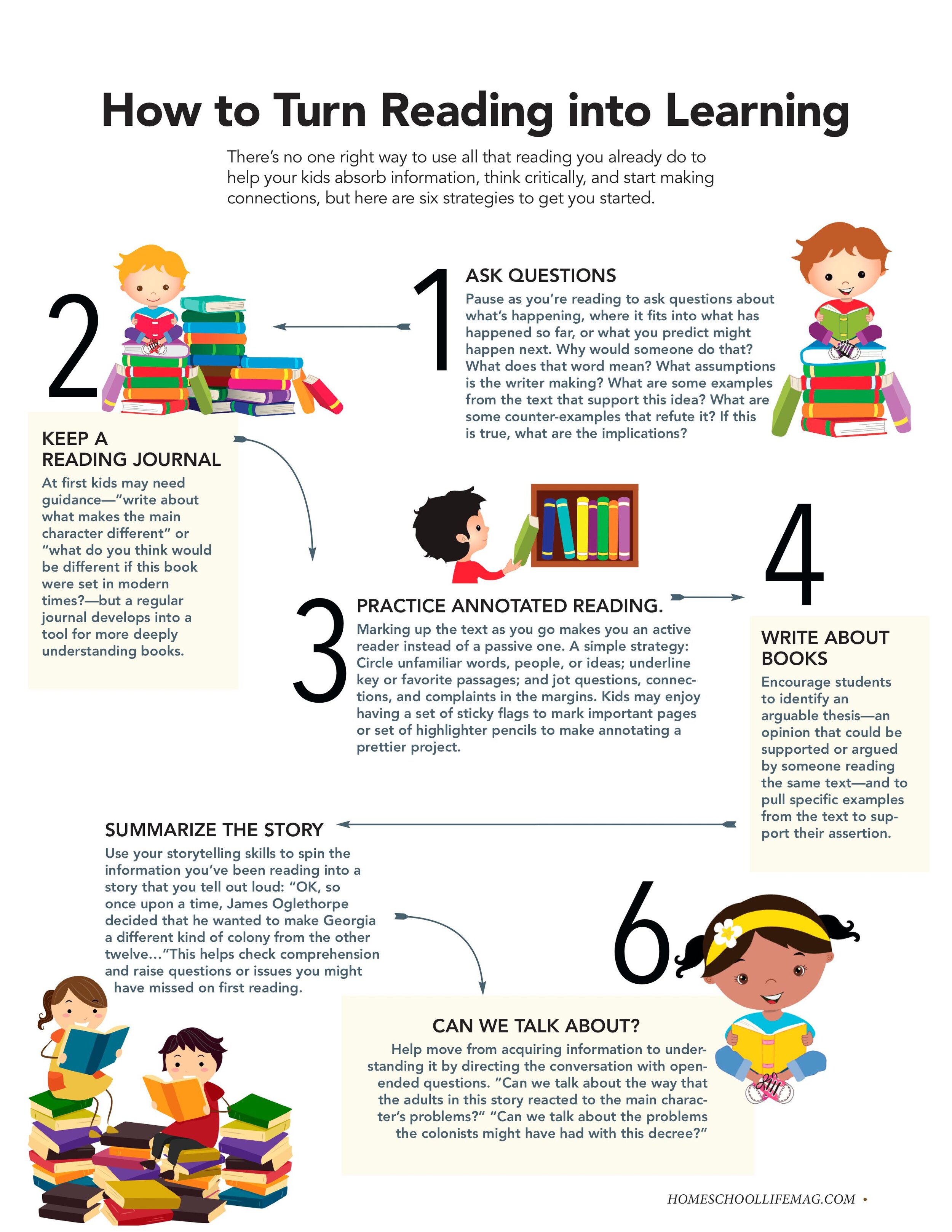

























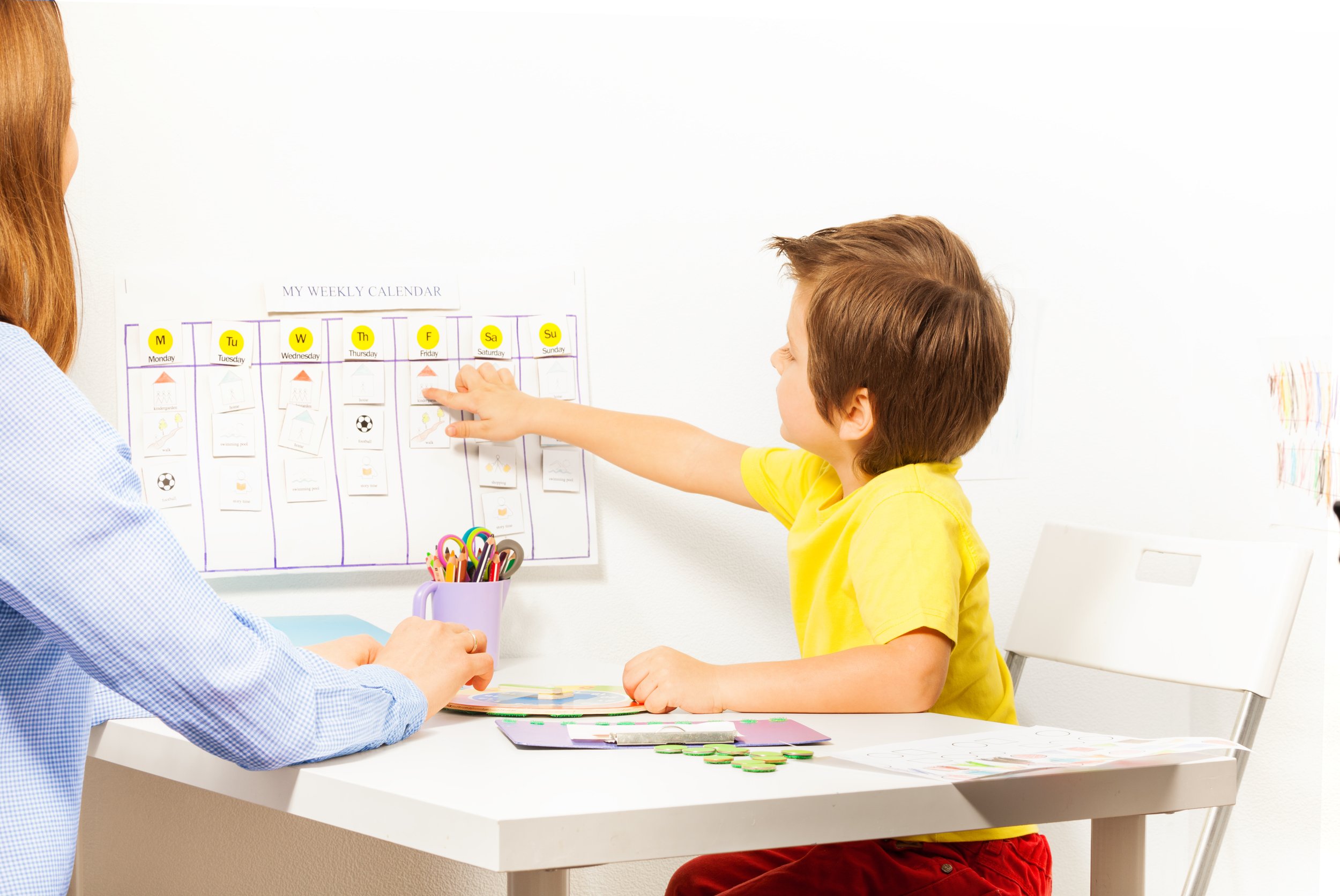



















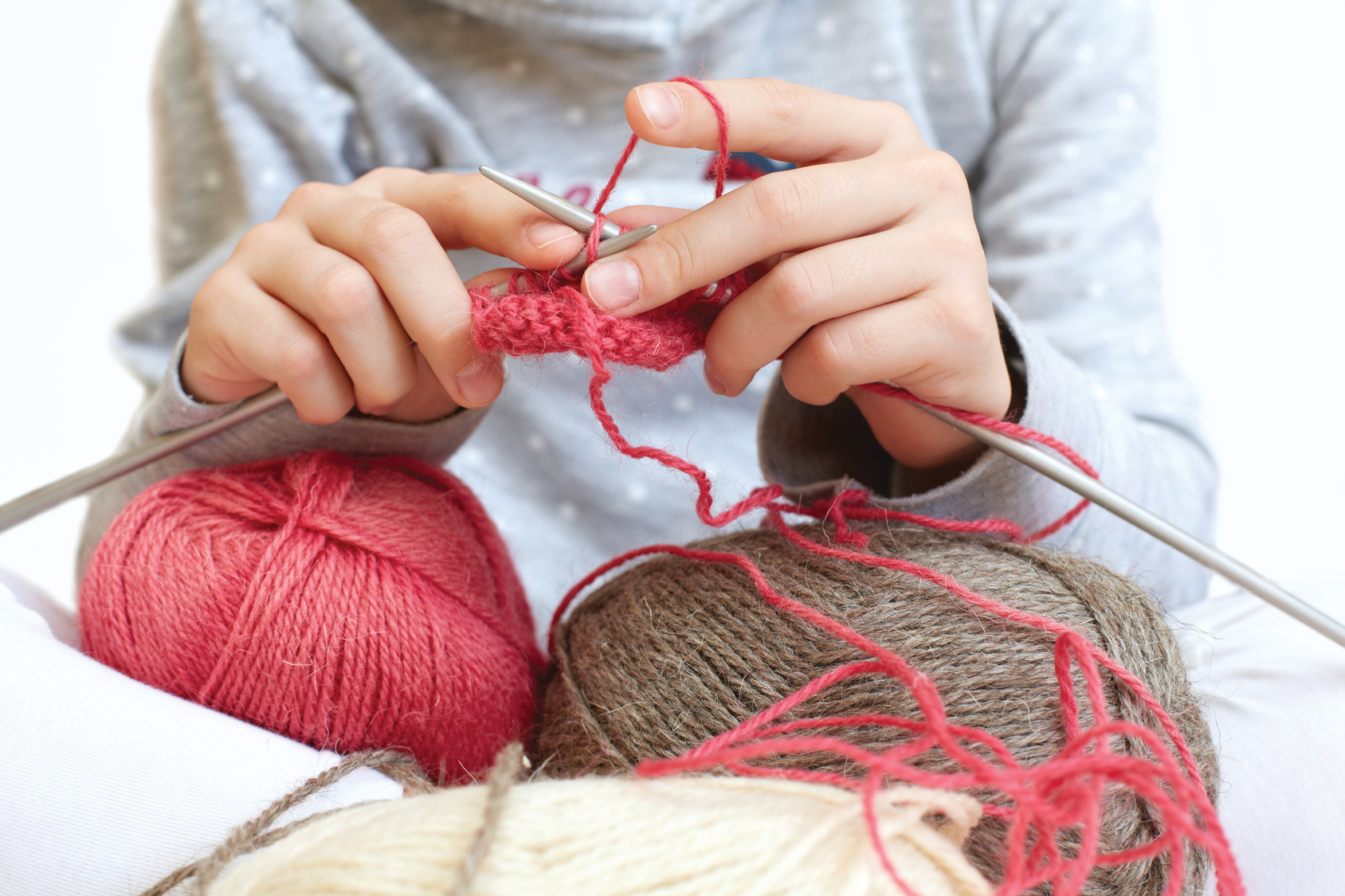









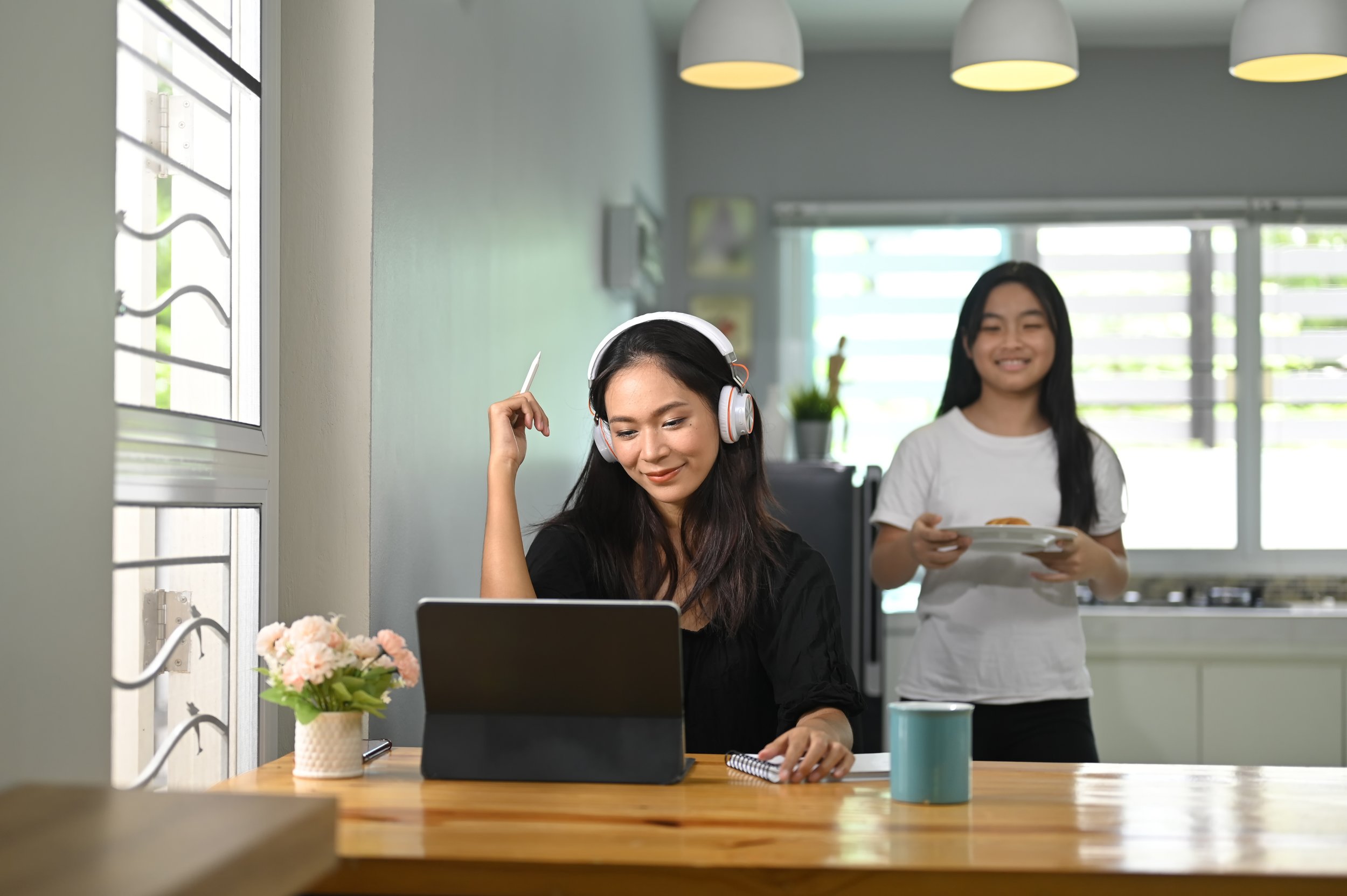





























































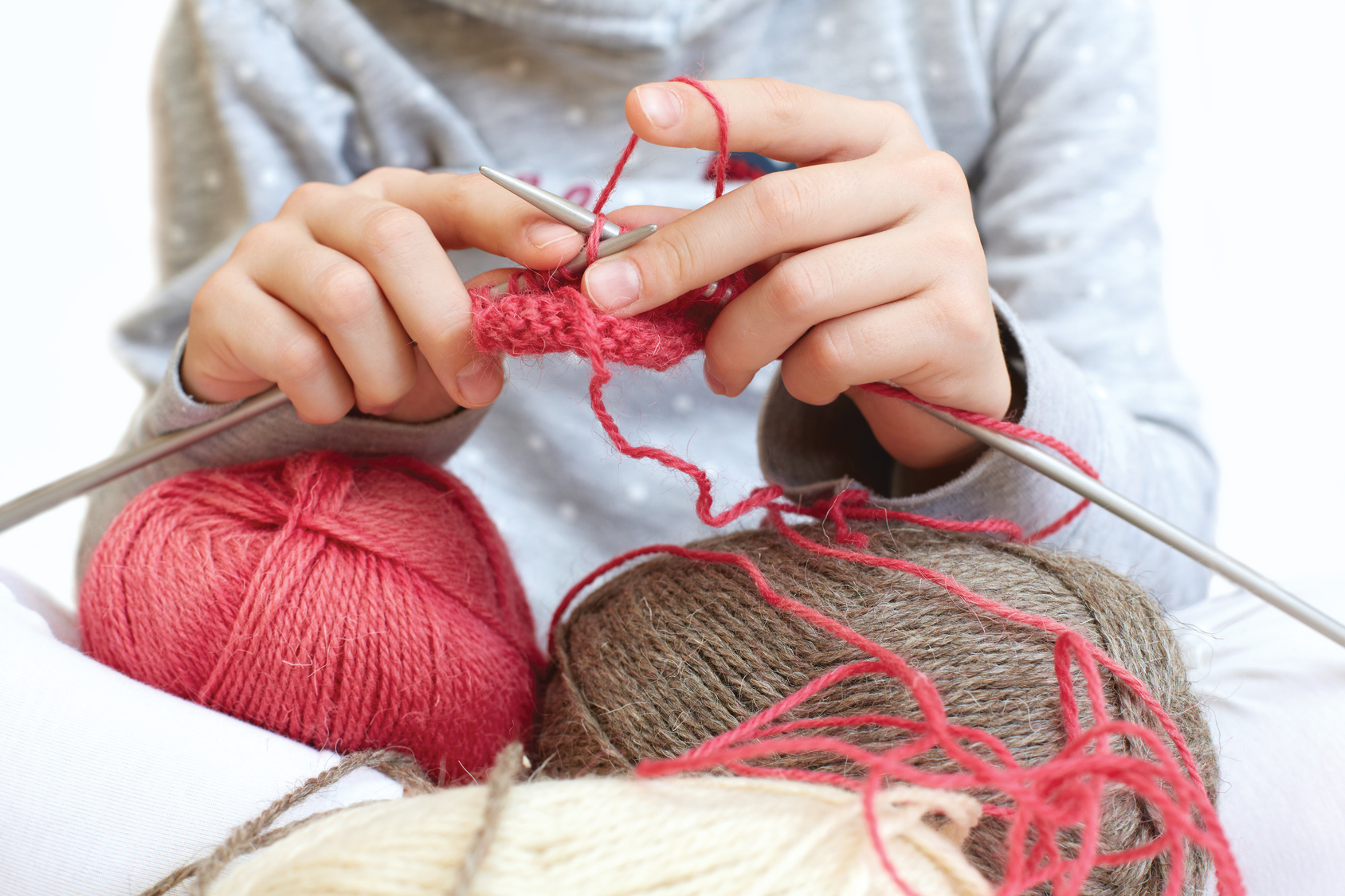














If you want your students to care about writing, give them writing projects that actually matter.